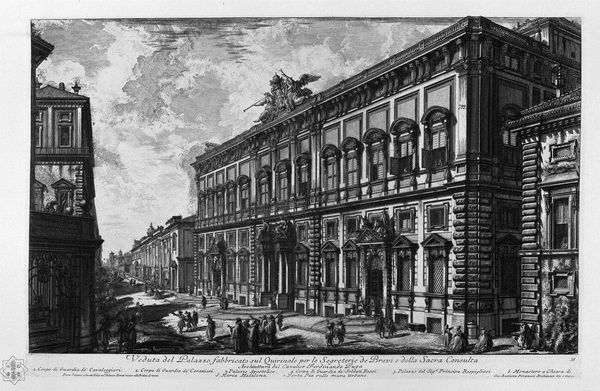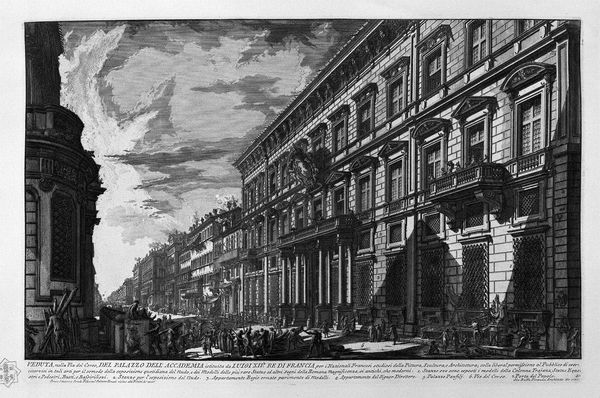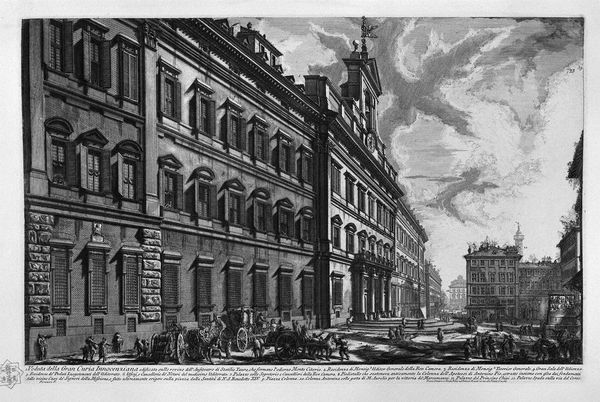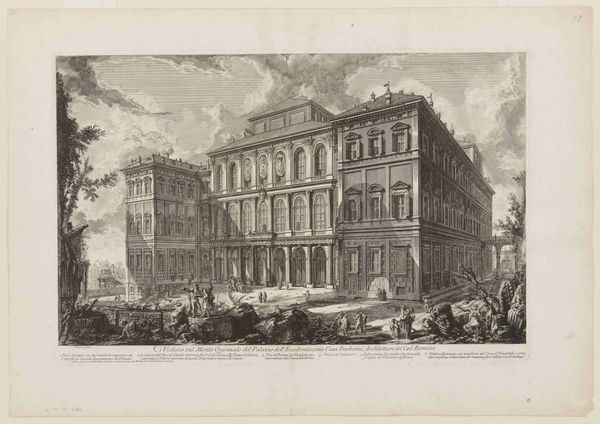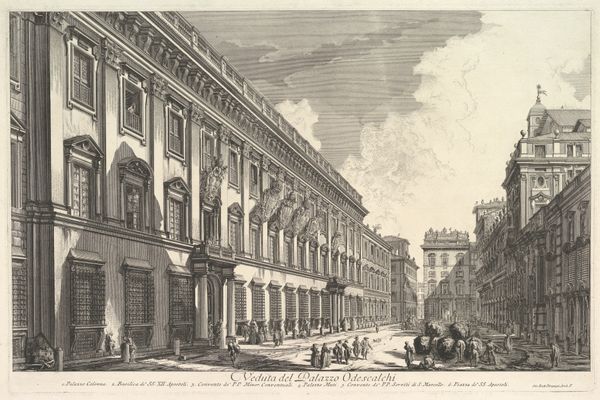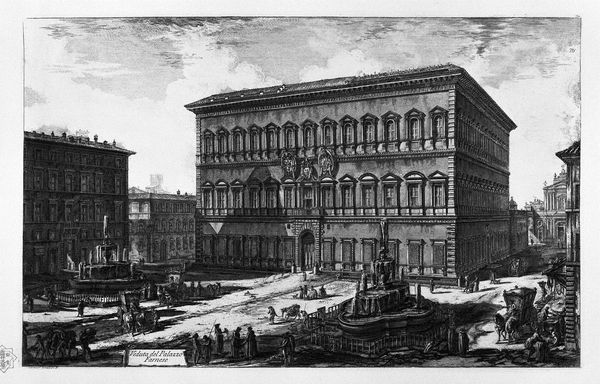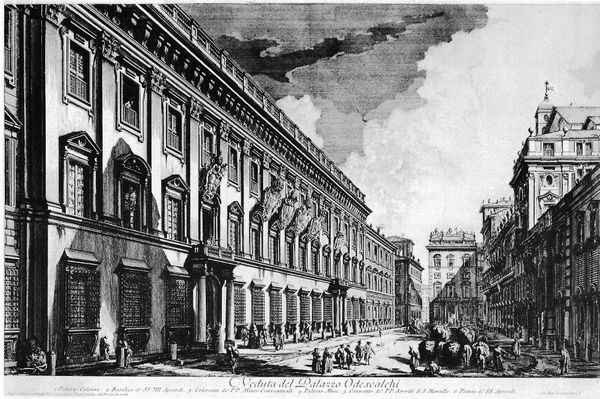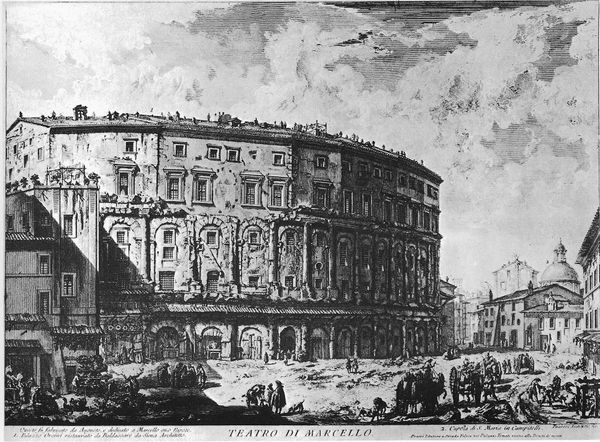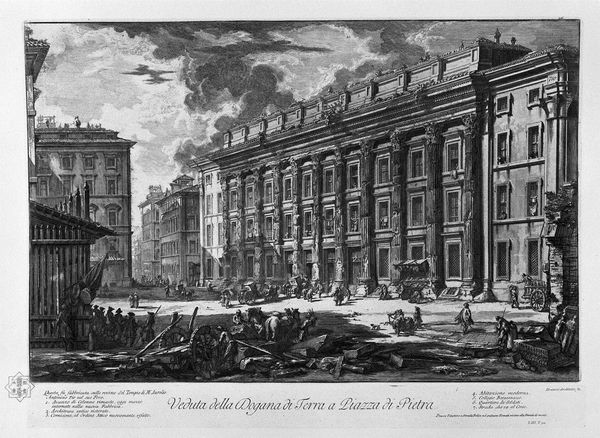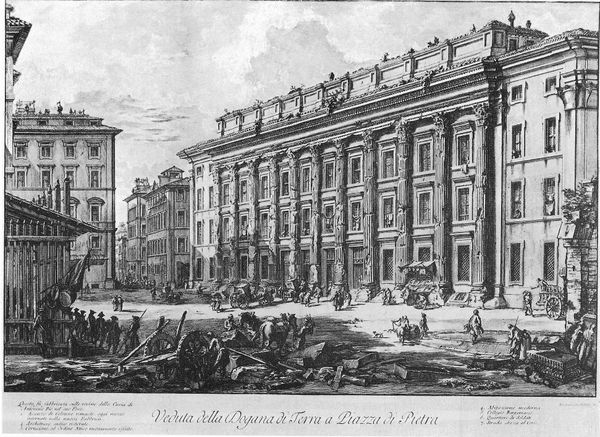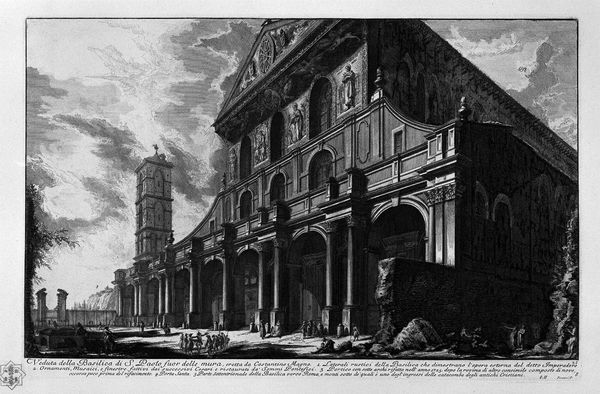
print, etching, engraving, architecture
#
architectural landscape
#
baroque
# print
#
etching
#
column
#
cityscape
#
history-painting
#
engraving
#
architecture
#
building
Copyright: Public domain
Curator: Looking at this image, I’m struck by its dynamism. There’s something quite dramatic about the play of light and shadow across the architecture. Editor: This is "View of the Palace Stopani" by Giovanni Battista Piranesi. It's an etching, engraving, and print rendering a specific cityscape with striking Baroque stylistic elements. What really grabs me here is the painstaking process required to create such intricate details, layering the history and materiality together, if that makes sense. Curator: It does. What does strike me about it is its implicit sense of power, prestige, who could have such architecture commissioned. Editor: Absolutely, there is a palpable sense of history and societal stratification ingrained in the built environment. The scale of the palace, combined with the detailed rendering of the figures milling around it, highlights social class distinctions through consumption practices. Curator: The Baroque style amplifies that further, doesn’t it? With its theatricality and ornamentation? Editor: Without a doubt. But even deeper, Baroque architectural works always signified who commissioned or supported art works to the eyes of whom. Here there is a great need for public endorsement on the patrons, to build an architectural style that still to this day impacts urbanity and modern architecture production. Curator: Considering the labor involved in both the palace’s construction and Piranesi’s engraving, one sees different scales of creative endeavor both driven by different forms of social control. One shapes living space, the other shapes representations that reinforce class boundaries in 17th century Rome. Editor: I think examining this image and the physical object of the work provides space for discussions around intersectional analyses of socio-economic status, class identity, artistic representation and societal power dynamics. The etching doesn’t merely represent architecture, it represents an entire societal fabric, the one it came from and the one it portrays. Curator: Exactly. This close looking at both image and process reveals embedded class-consciousness to better understanding socio-economic complexities of history and its visual material culture today. Editor: Indeed. It shows that through examining processes and materials of art we learn and build our perspective on society.
Comments
No comments
Be the first to comment and join the conversation on the ultimate creative platform.
